Malina is the Swedish brand that dresses life’s happiest moments. Now, with a sense of celebration in every stitch, founder Malin Ek Andrén has her sights set on the US and the UK. Bound for world domination in a maxi dress, these are the silky, floral-printed secrets behind Malina’s 14-year-long success story
Weddings with lace-trimmed veils and sorbet bridesmaids, endless parties, joyful graduations, and birthdays filled with bubbly toasts and cheek-kisses; maxi dresses worn during sun-drenched trips and endless summer days; sipping Aperol Spritz and swinging your basket bag. For most of us, Swedish brand Malina is associated with the very best of life.
Since 2010, founder Malin Ek Andrén’s colourful designs have dressed thousands of women in their happiest moments. But setting up a company on your own terms, without the involvement of investors, comes with its fair share of struggles. “There have been so many hurdles along the way,” shares Ek Andrén. “Knowing when to grow, when to hire. Knowing how much energy you have to dedicate to your business – you’ll need a lot of energy – and when you’ll need to bring in help. If I were to launch Malina today, I’m not sure I’d have enough energy. Definitely not the kind of energy I had at 27.”
According to Ek Andrén, Malina was a reaction to four “dog years” spent in China working with the production chain. “They were long hours, but I believe it instilled a work ethic in me I carry with me to this day. Everyone should work abroad,” she says, reminiscing about 12-hour days and after-work drinks kicking off at 21:30. During her time abroad, Ek Andrén developed a deep respect for the factories. “Understanding the process, how manual it still is, you have a leg up when developing your own collection,” she says. “For example, when you want to change the buttons or some other detail, someone has to head down to the market on their Vespa to source options. It is still very hands-on.”
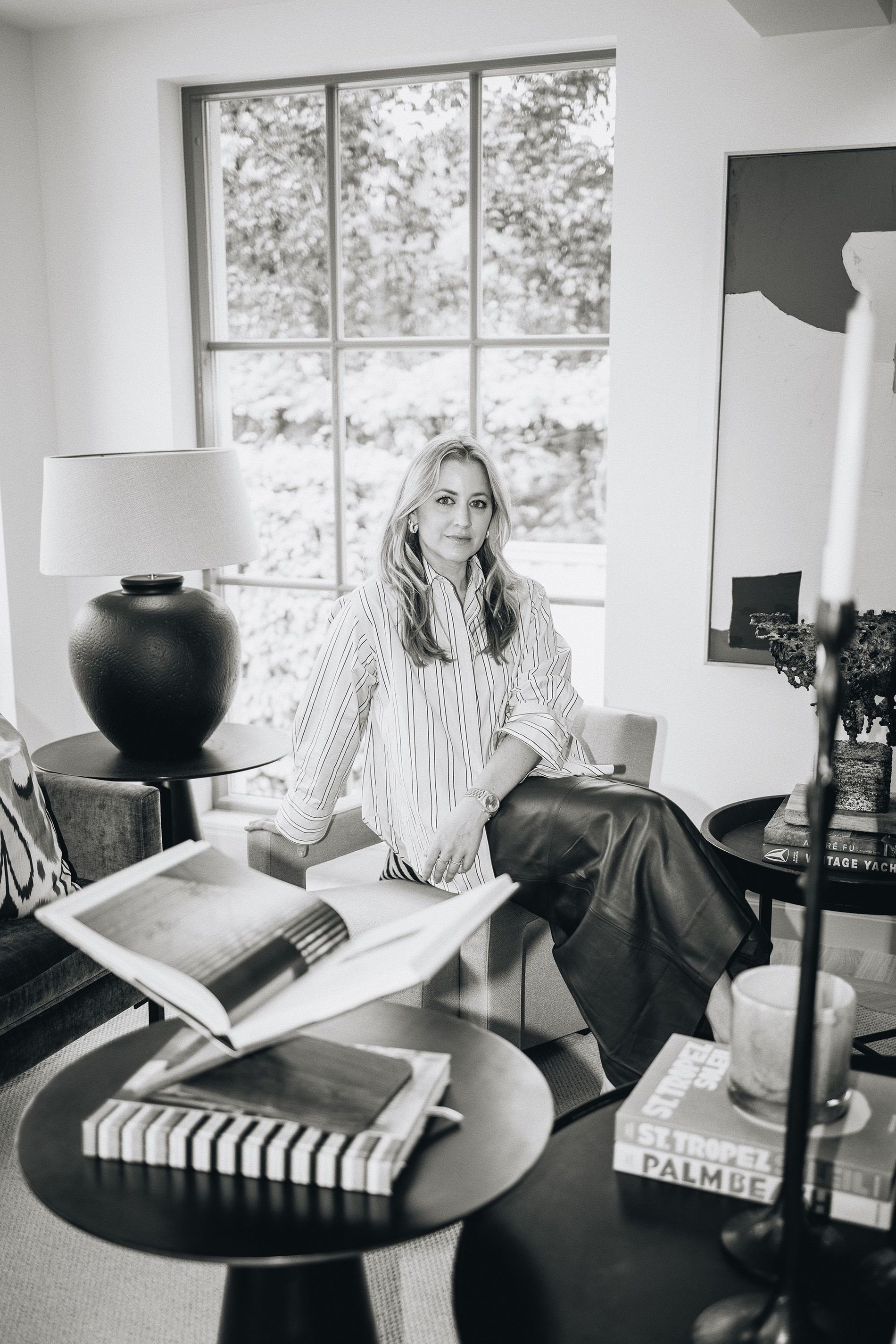
Malin Ek Andrén in her Stockholm home. Photo: Margarita Sheremet
Ek Andrén is shocked by the number of people in the fashion industry, specifically in the production chain, who have never visited a factory. “You get a completely different perspective and respect for the craftsmanship when you’re there.” According to Ek Andrén, the factories and craftsmen have been key in creating Malina. Her first handful of dresses were made in a small “hole-in-the-wall” tailoring shop in Hong Kong. “I am happy to say we still work with the woman who ran that shop. Today, she’s expanded and owns her own factory where we make all of our bridal collections.”
If I were to launch Malina today, I’m not sure I’d have enough energy. Definitely not the kind of energy I had at 27
Malin Ek Andrén
Of her time in China, Ek Andrén describes it as “isolating.” “So when I got back to Sweden I really didn’t want to get caught in the corporate grind,” she says. Ek Andrén was 27, and all around her friends and family started getting married. “I had such a hard time finding formal dresses that I liked,” shares Ek Andrén. “Because there were so few options, everyone ended up wearing the same thing.” Ek Andrén’s answer to the problem was to produce the dresses herself at the small tailors in Hong Kong. “In silk. Always the best quality silk with large prints, because I never got to use it when I worked in China.”
The designer proceeded to give all of her dresses away to Sweden’s fashion-savvy tastemakers – Vogue Scandinavia’s editor-in-chief Martina Bonnier included. “I started getting phone calls and requests by retailers,” says Ek Andrén. “It was all small scale, and at the start I was still working made-to-measure, having people come over to my parents’ place for fittings.”
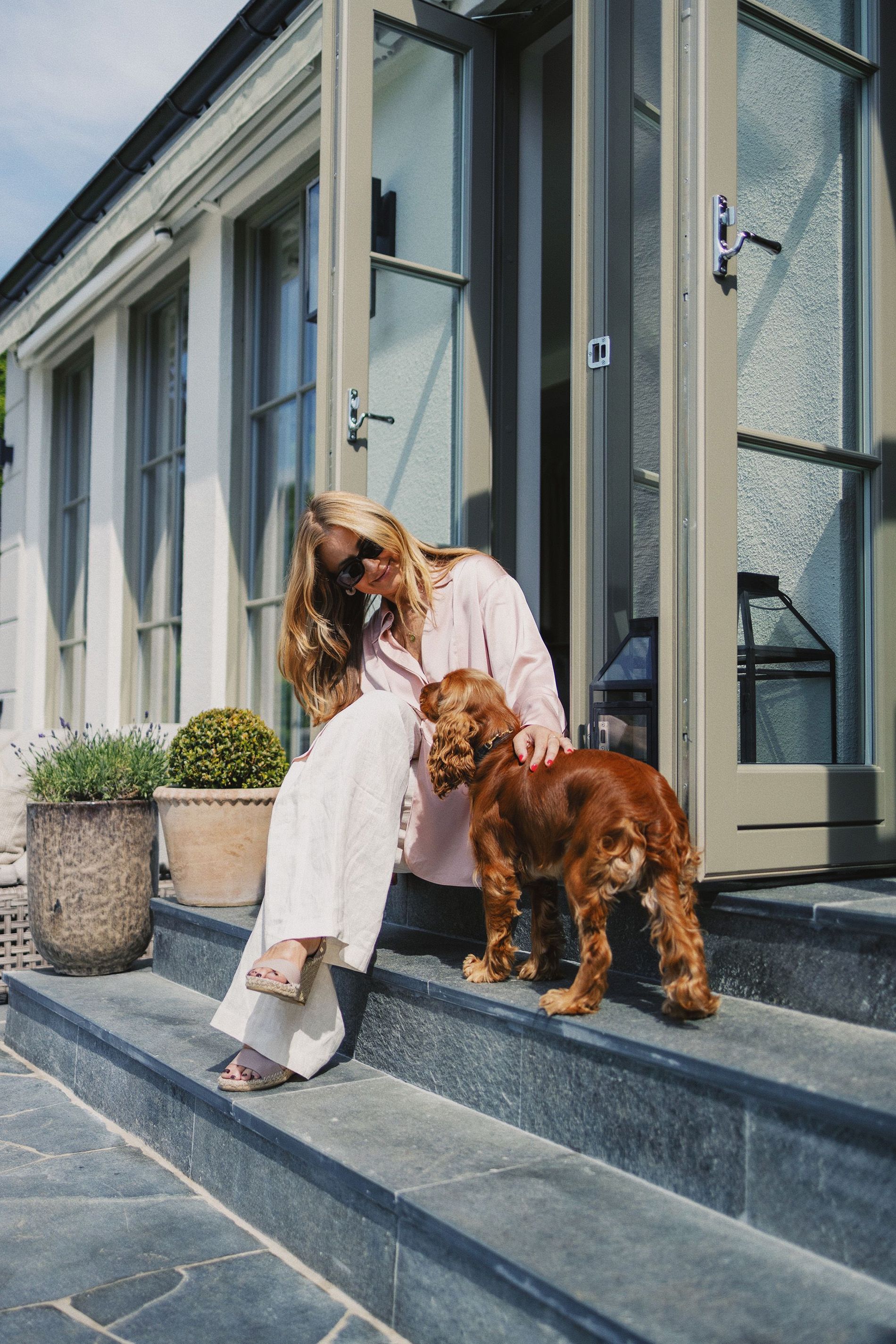
Photo: Margarita Sheremet
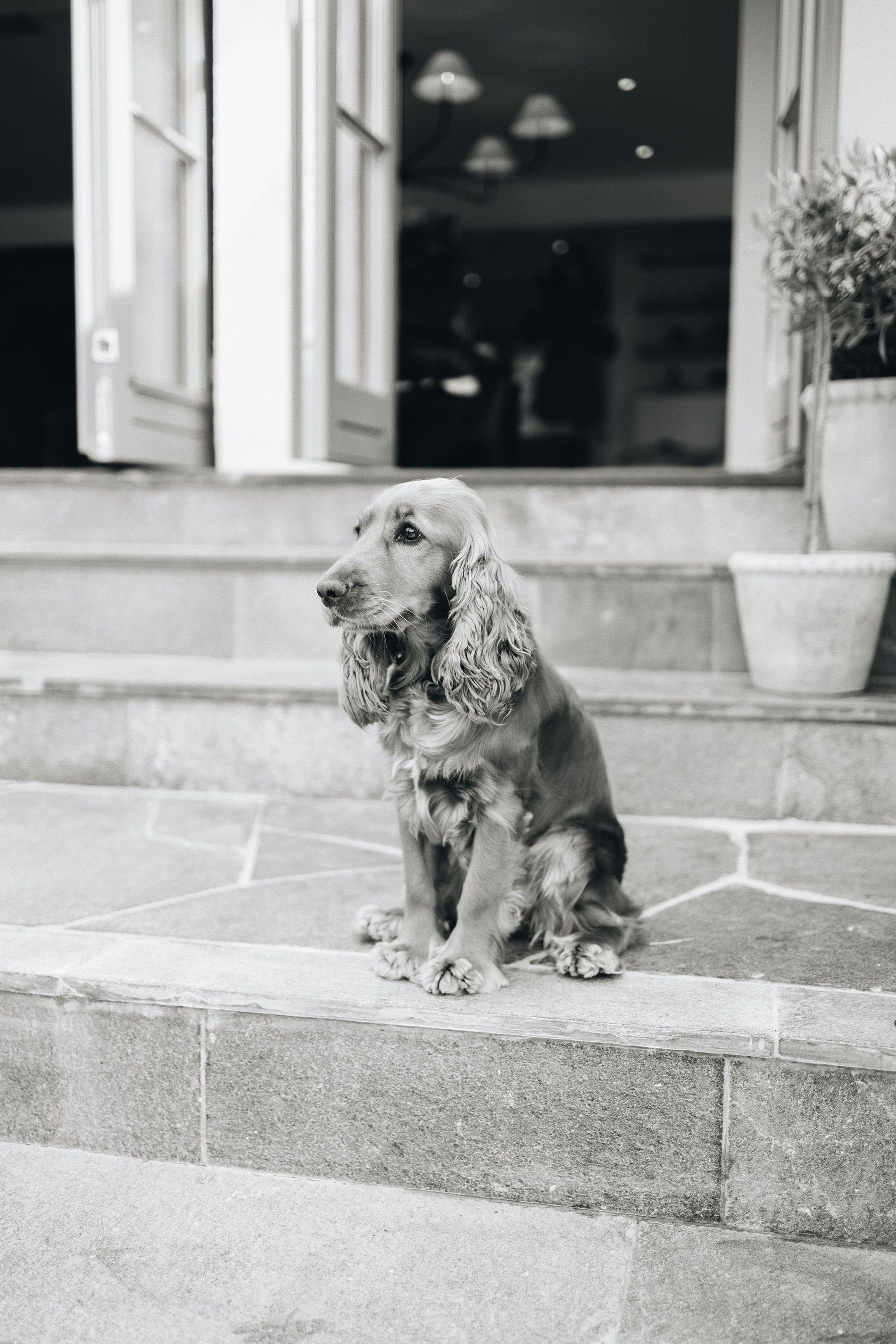
Photo: Margarita Sheremet
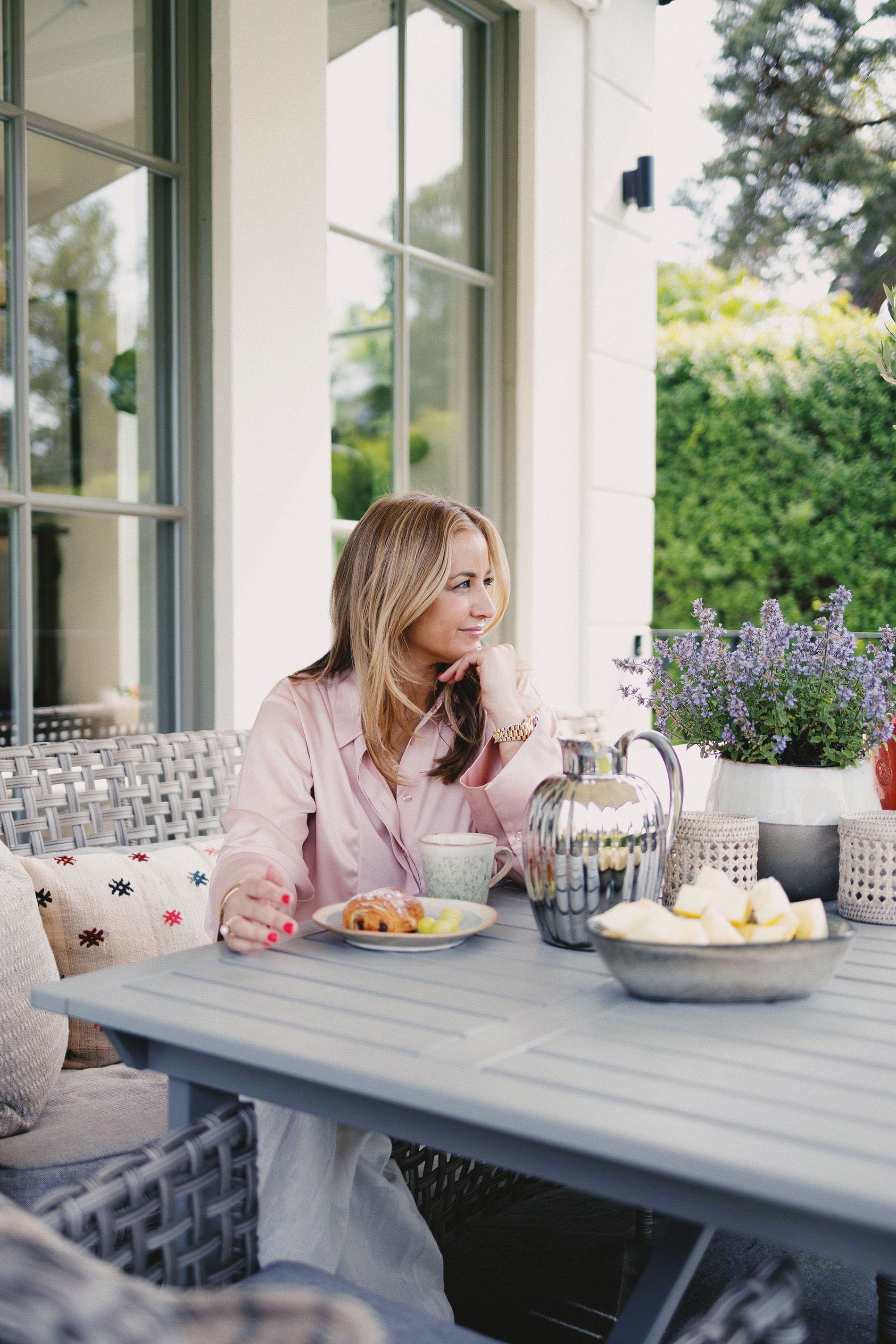
Malina’s long-lasting success can be attributed to a superbly strong DNA. “For a long time, all we did was formal maxi dresses in silk,” says Ek Andrén. As a result, Malina quickly became the go-to brand for occasion wear. When people received party invitations or were getting married, top of mind was Malina. “I think it is really key to establishing a successful brand to find your niche, to become associated with a certain category be it baby clothes, swimwear or occasionwear, before you expand.”
The brand got its start during a time in Swedish fashion when androgynous looks in black, white, and beige ruled supreme. “I guess I launched in the wrong country,” laughs Ek Andrén, whose grandmother from Greece paved the way for the designer’s love affair with the more colourful Mediterranean aesthetic. “I just knew at the time that what I crave in the Nordics is Vitamin-D, beaches and rosé…” she trails off. That, and the effervescent fashion to go with it. “I’ve always followed my gut when designing, making clothes that I would want to wear myself,” says Ek Andrén. “What’s the point of making something you or your customer don’t want to wear just because? When you stop listening to your gut, designing what you love, your brand will die.”
What’s the point of making something you or your customer don’t want to wear just because? When you stop listening to your gut, designing what you love, your brand will die
Malin Ek Andrén
In order to grow, Malina’s emblematic dresses expanded into blouses. Soon, Malina had tried its hands at most product categories. “Today we’re super popular for our swimwear as well, but we wouldn’t have been able to explore that if we hadn’t already established ourselves properly,” says Ek Andrén. “Then again, we’ve tried a lot of categories that haven’t stuck around – children’s, skiwear… You name it. But you have to try new things to see what works.”
Throughout the years, Malina has had a run of popular wardrobe icons: The bell-shaped Cleo blouse, the frilly Carmine lace dress, and more recently the knitted tulip top with its flattering, heart-shaped neckline. “The Cleo blouse was never meant to be for sale,” reveals Ek Andrén. Produced for a runway show in a bright pea green, the designer and her team asked themselves 'Who would buy this?' Having nabbed the sample, Ek Andrén later wore it to a New Year’s Eve party. “Everyone was asking when the blouse would be available, so I confidently said ‘next autumn,” she laughs. Since then, the blouse has come and gone in a variety of colours, always available in neutrals like black and white. Most recently, it was released in blush and the same bright green as the very first sample.
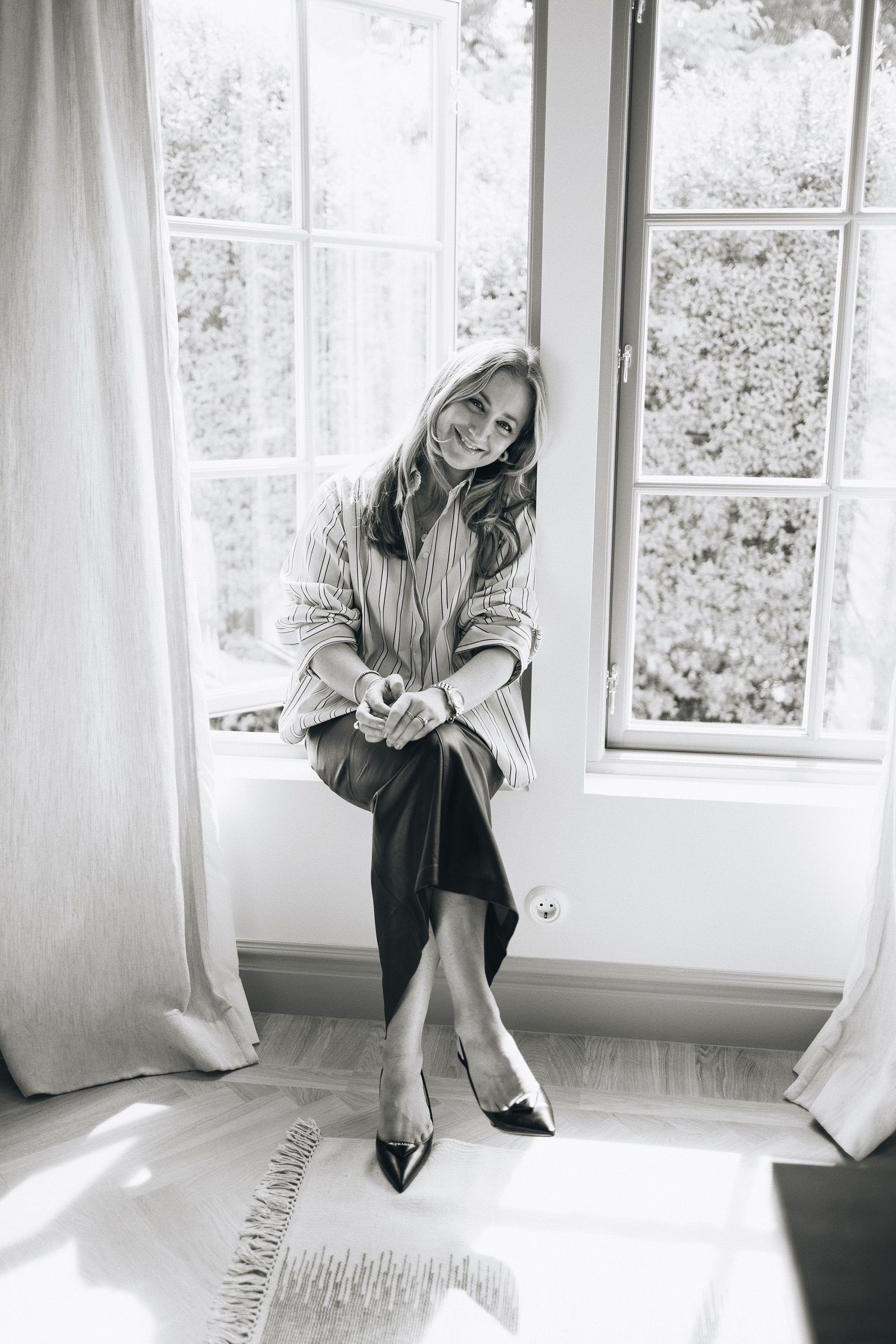
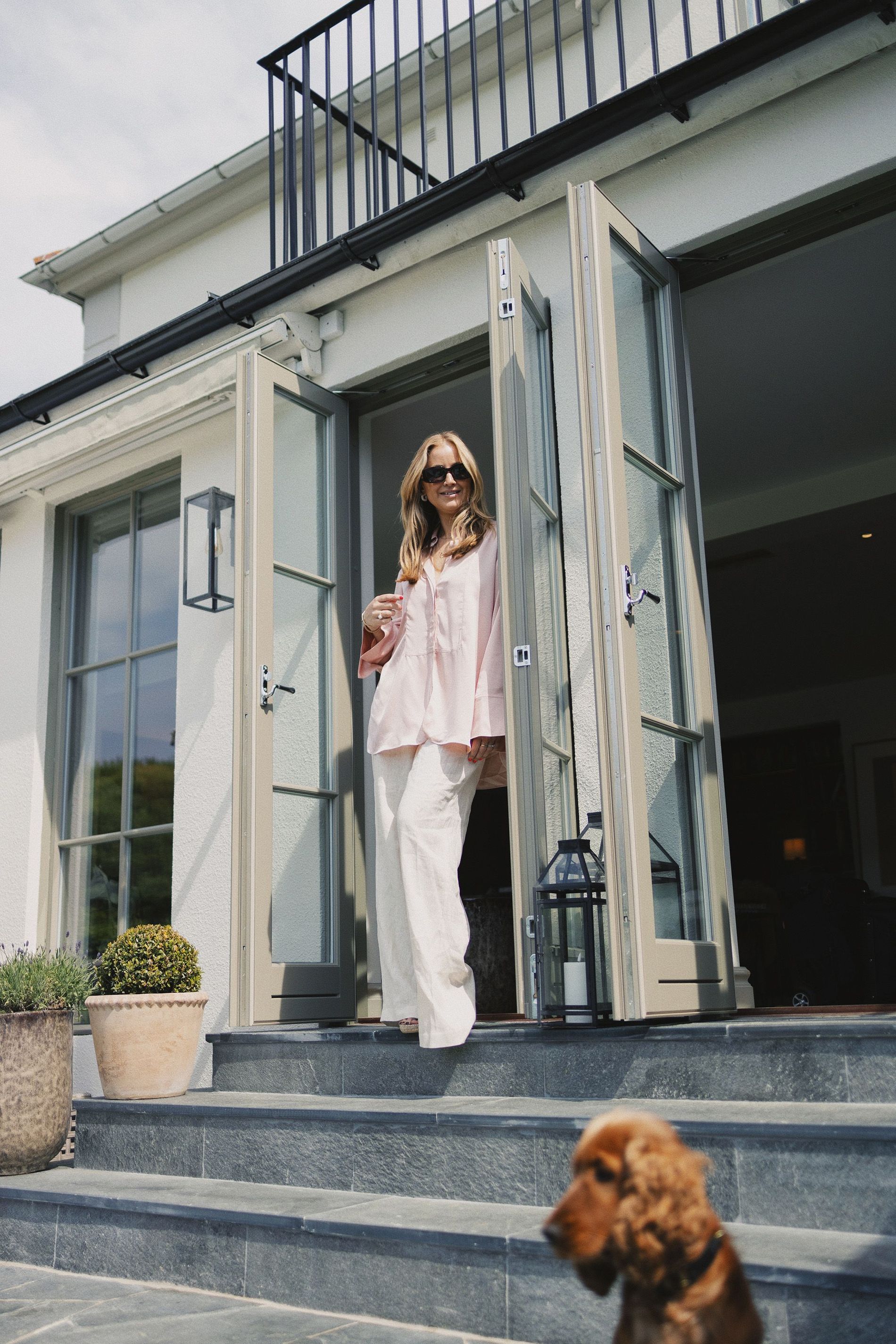

Speaking on reinvention and the potential pitfalls of ‘iconic’ designs, Ek Andrén shares that you have to “let certain pieces rest.” “There’s a fine line between having an iconic product and being too repetitive,” she says. “Depending on the season and overall collection, we will bring pieces like Cleo or Carmine back in different colours.” Effectively keeping the icons alive, without overexposing them. For the autumn ahead, Ek Andrén has rediscovered a new archival piece that never made it into production. “It’s the same story as with Cleo, I wore it to a party and it seemed as if people really wanted it. I really wanted it,” she says of the crisp, bell-sleeved blouse.
“You need a wide offer, but it can’t be sprawling. My brain is always brimming with ideas, but you have to learn to kill your darlings,” says Ek Andrén. Over the past three or four years, Ek Andrén and her team have tried to really analyse each collection. “I don’t have any urge to represent my ‘aesthetic abilities’, of course everything we do has to read Malina but there’s no need to be prestigious or pretentious about it. At the end of the day, the customer needs to like it to buy it.”
While Malina is intrinsically linked to occasionwear and flowy maxi dresses in Sweden, expanding beyond our Nordic borders has allowed the brand to branch out. “When we entered Europe, all of a sudden we were working with a blank page. They don’t have any preconceptions about what Malina is, so they come in and buy a pair of jeans and a white shirt,” says Ek Andrén. Now the brand is broadening its horizons again, entering the US and UK, and with the new markets comes yet another clean slate. “It’s why we decided to rebrand now. Because we’re able to kind of redefine who we are in these new markets.”
When she started Malina, Ek Andrén’s hopes and dreams for the brand were confined to Stockholm. “Then I had hopes about reaching all of Sweden, then Norway, later Europe and now the US and UK,” she muses. “It’s all been incremental.” Expanding across the globe, one fabulous silk maxi dress at a time.
